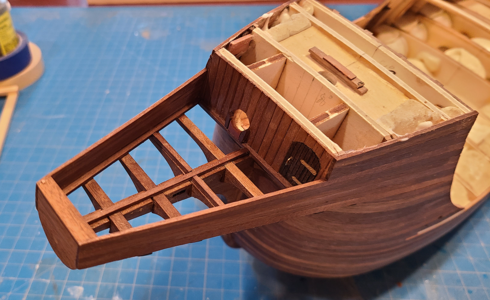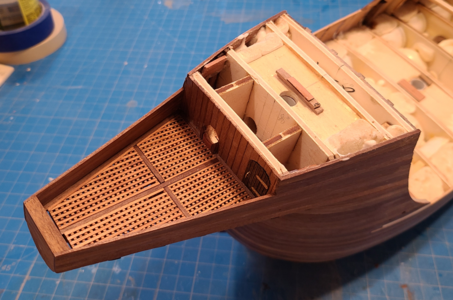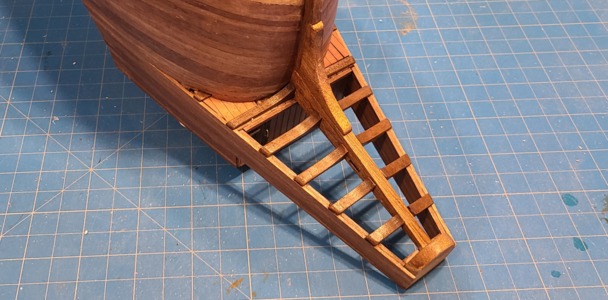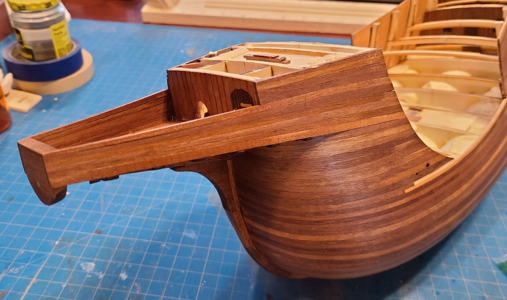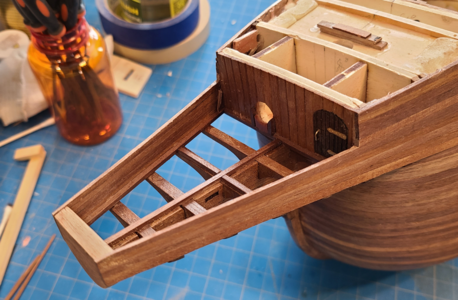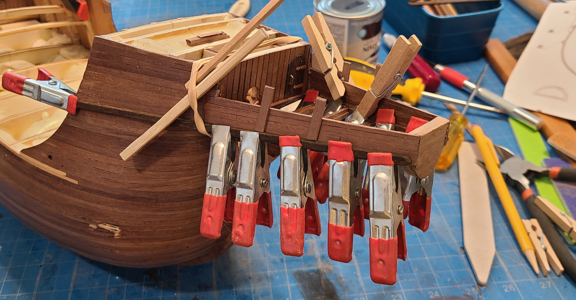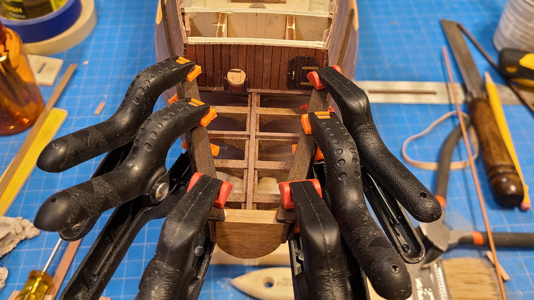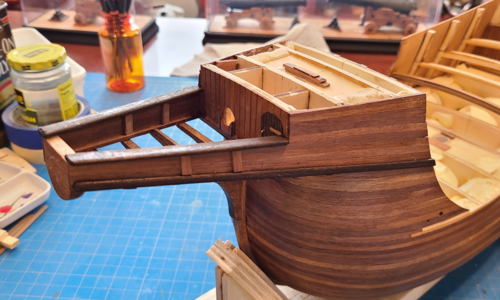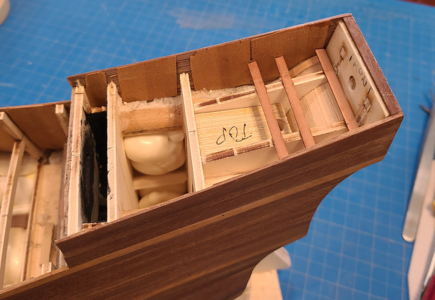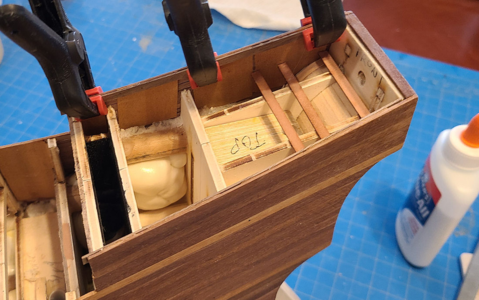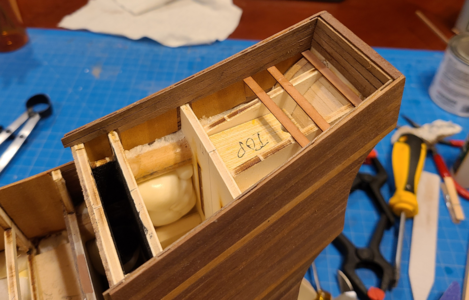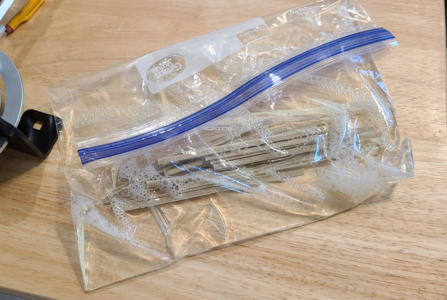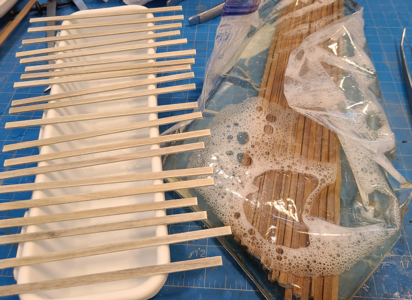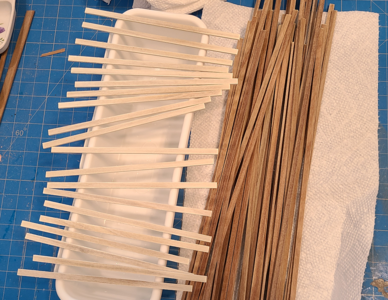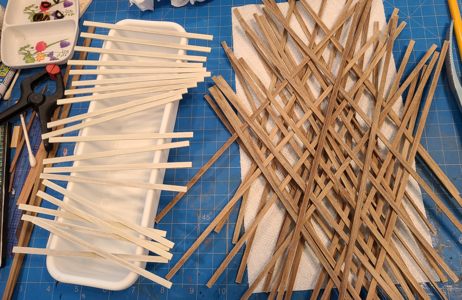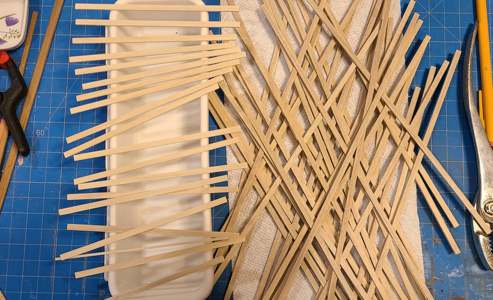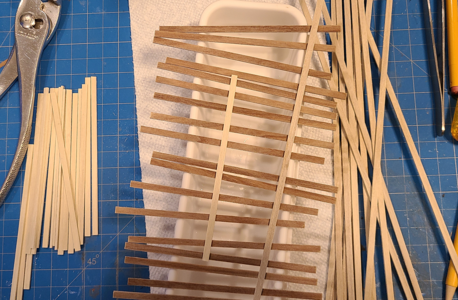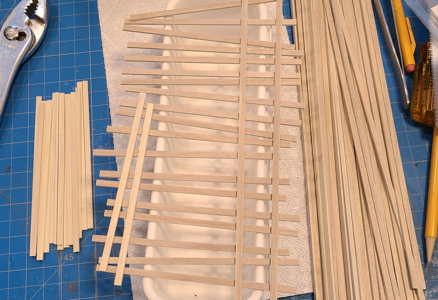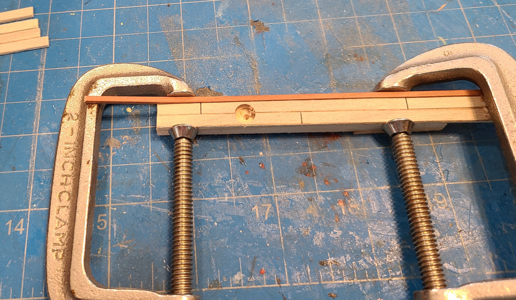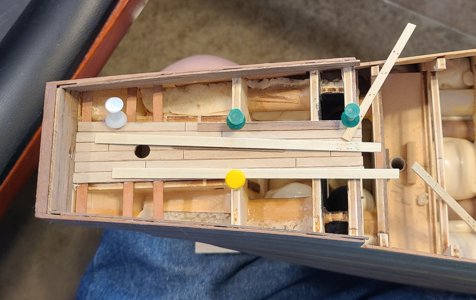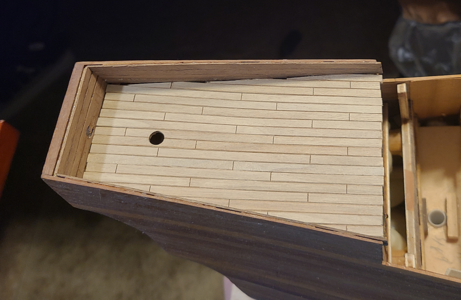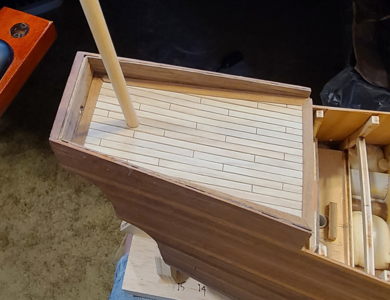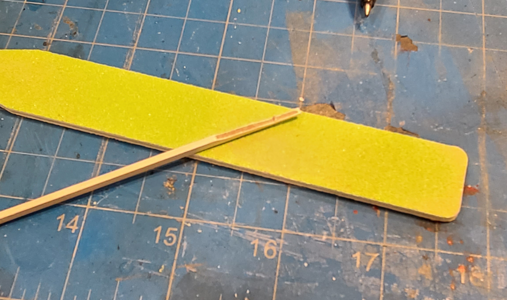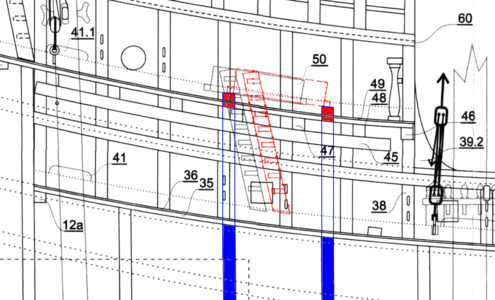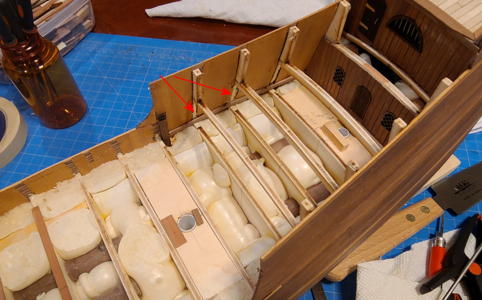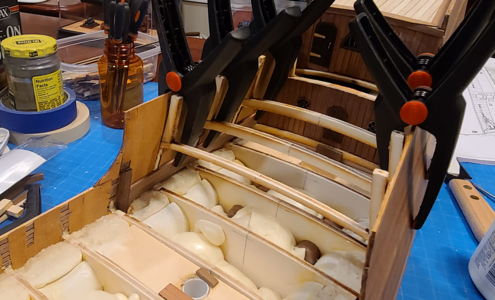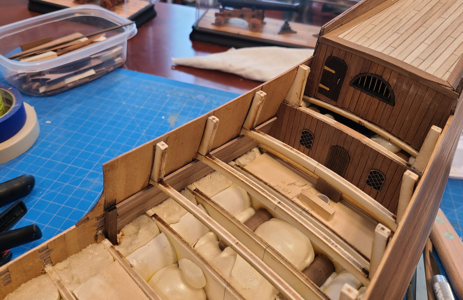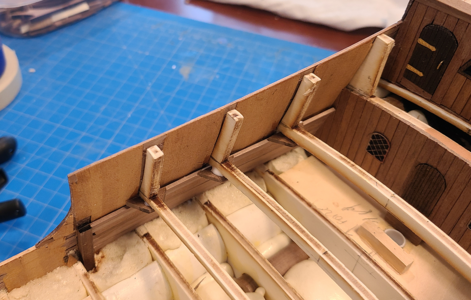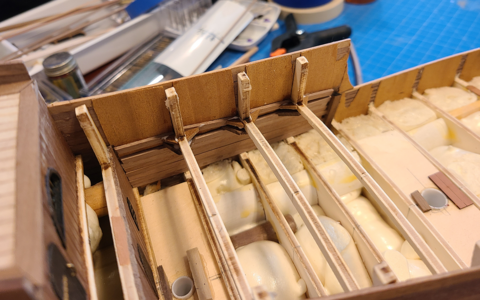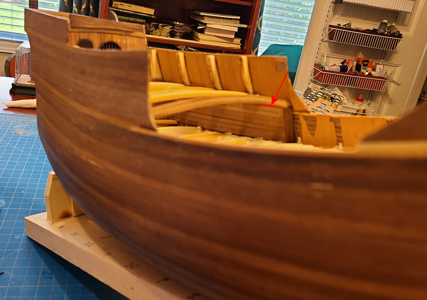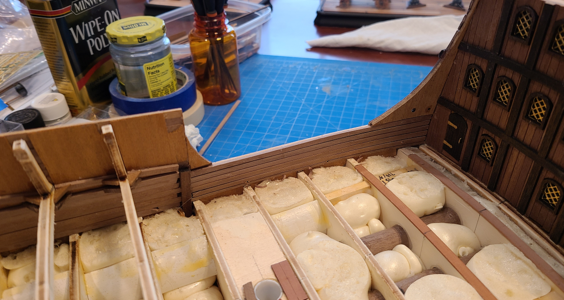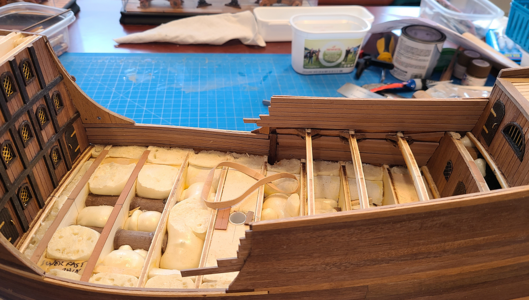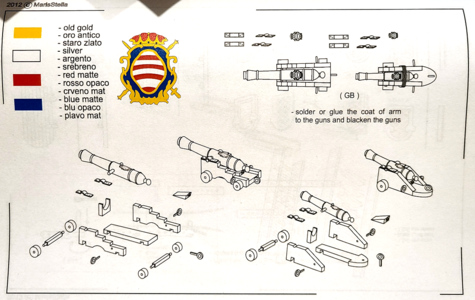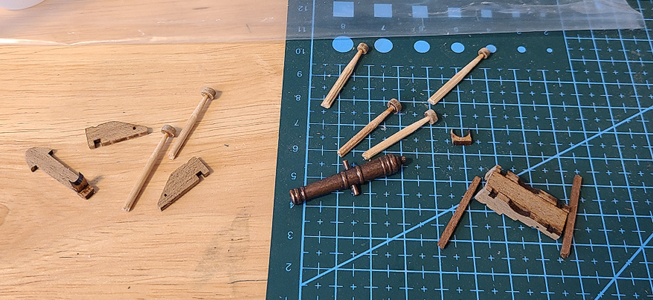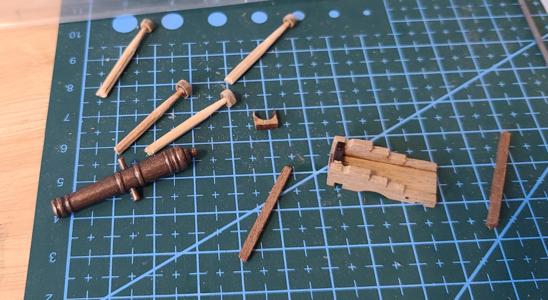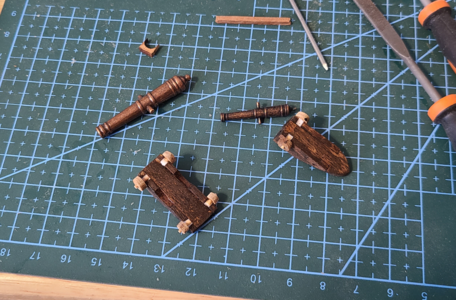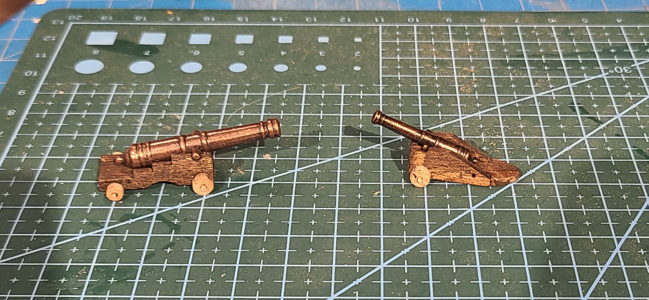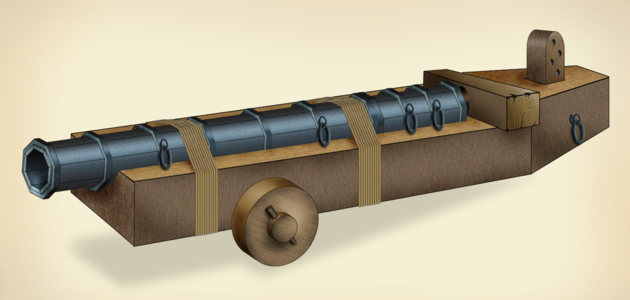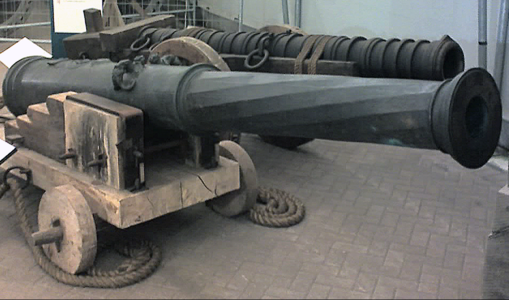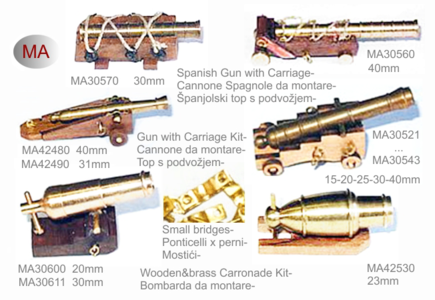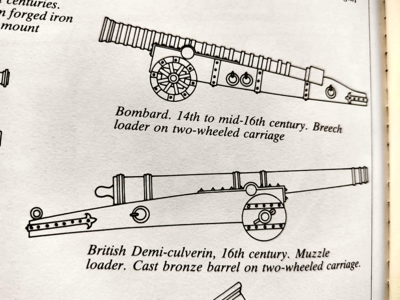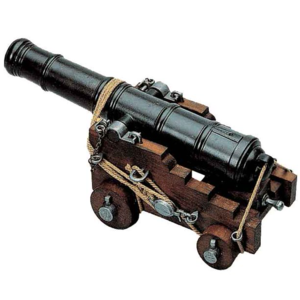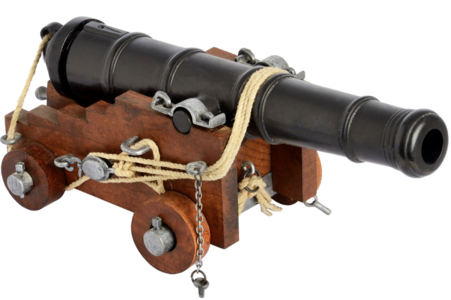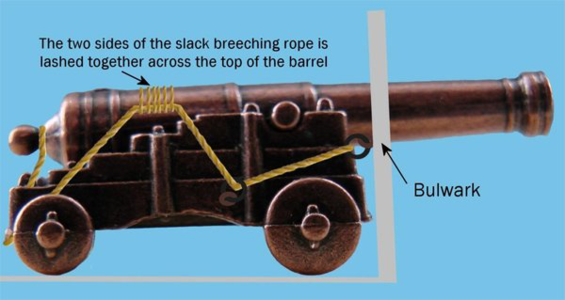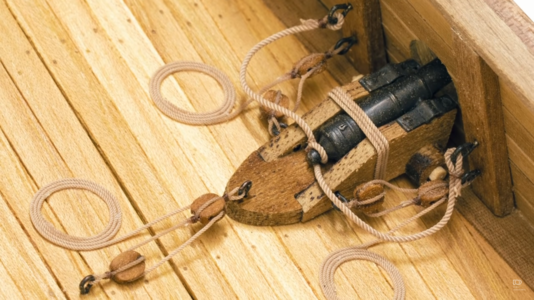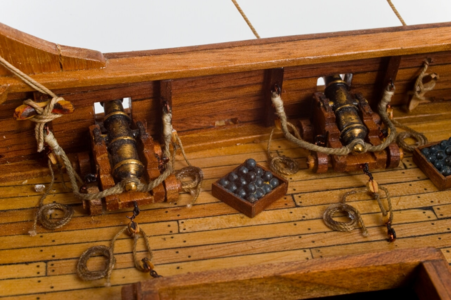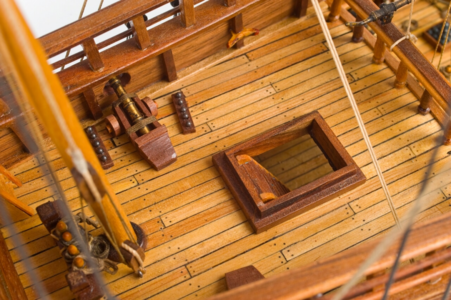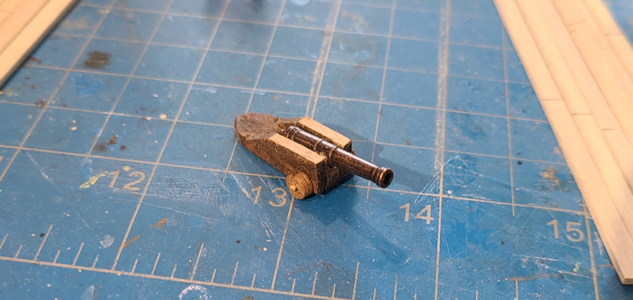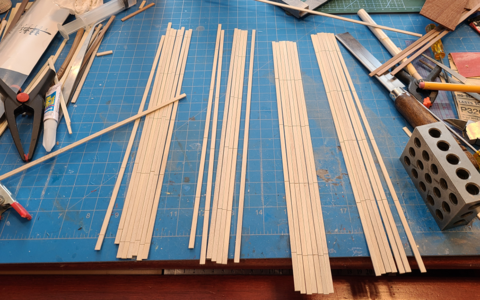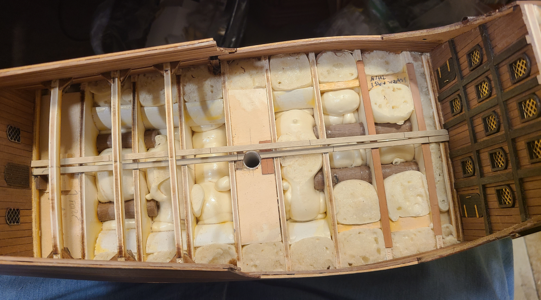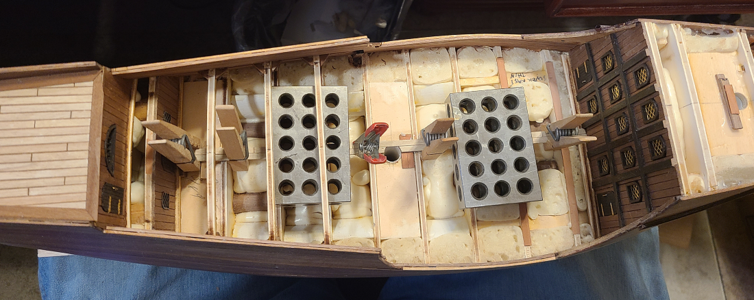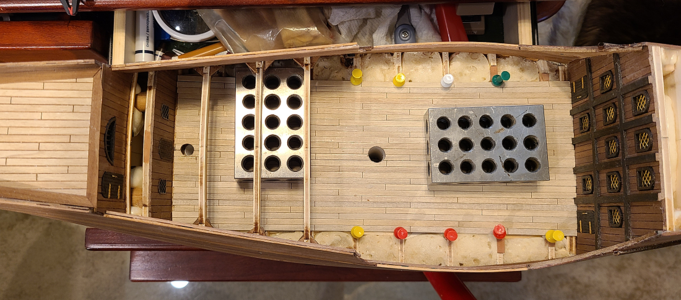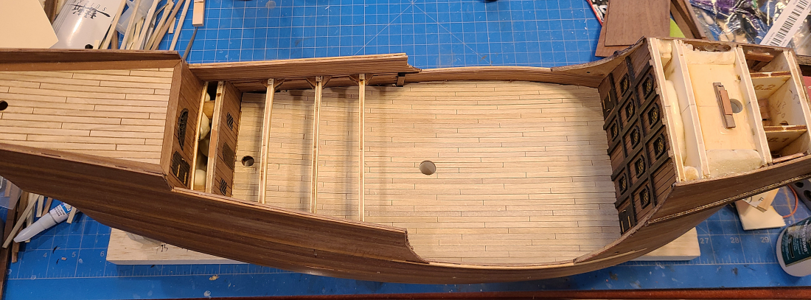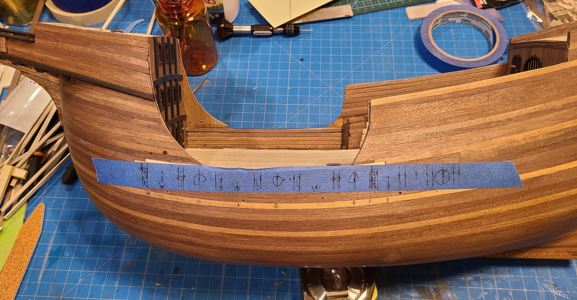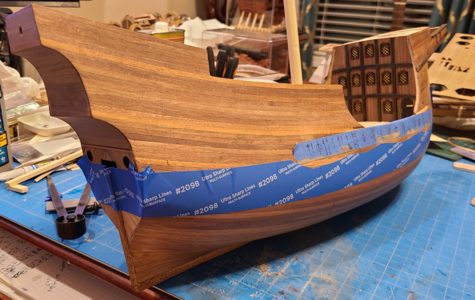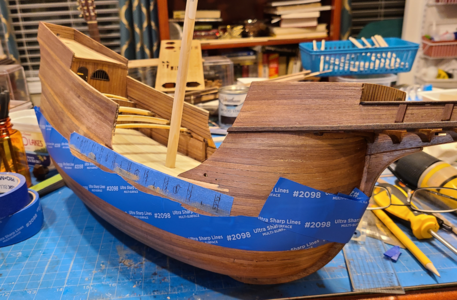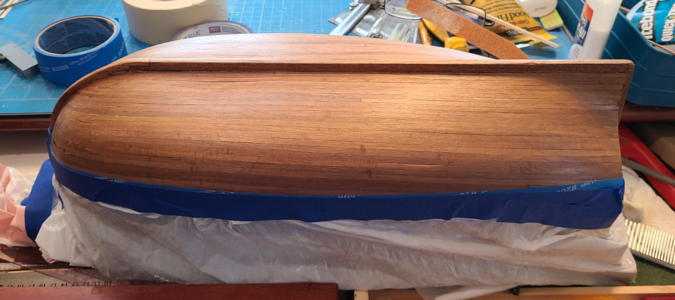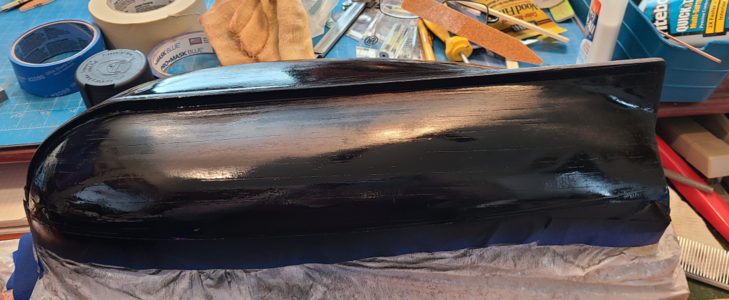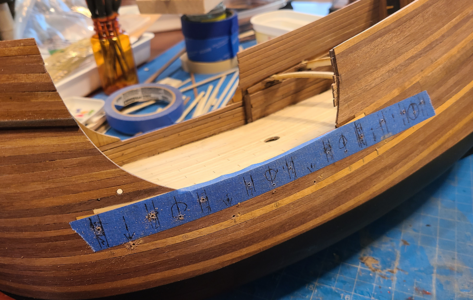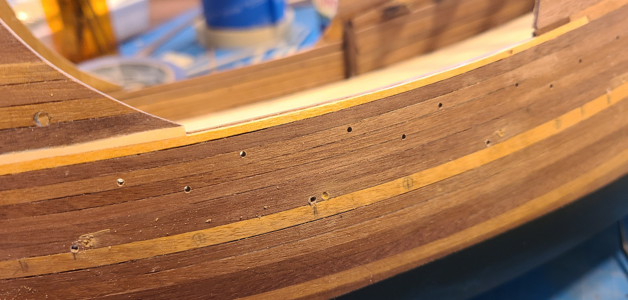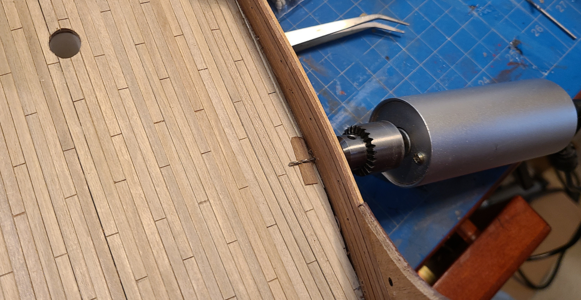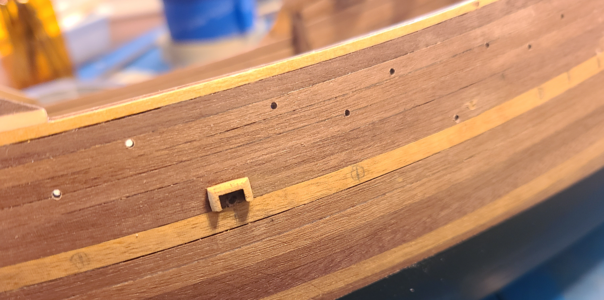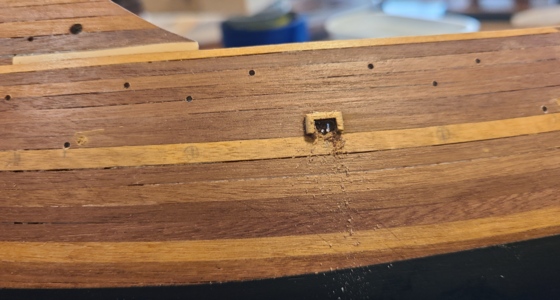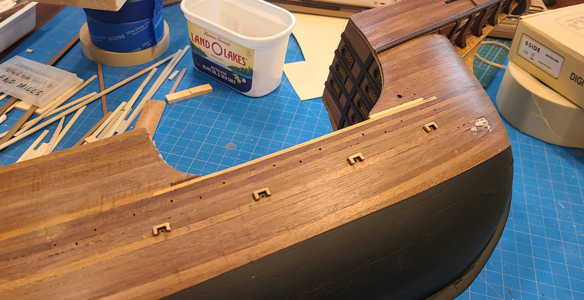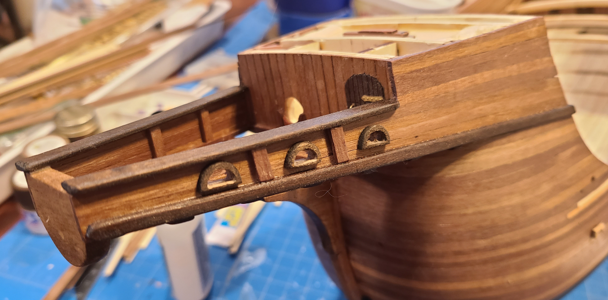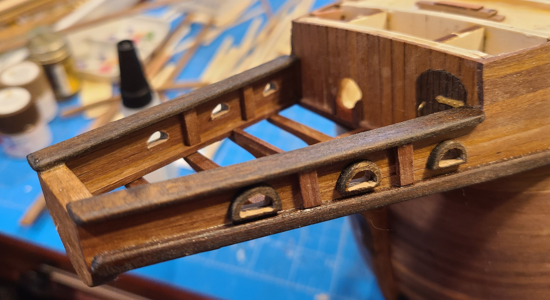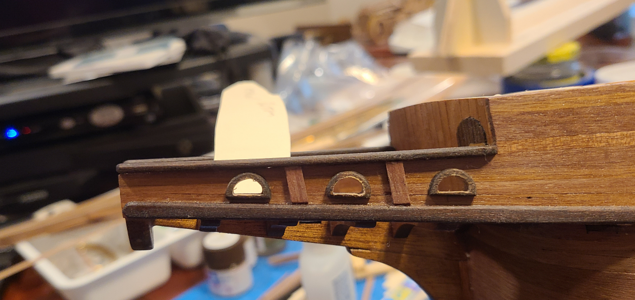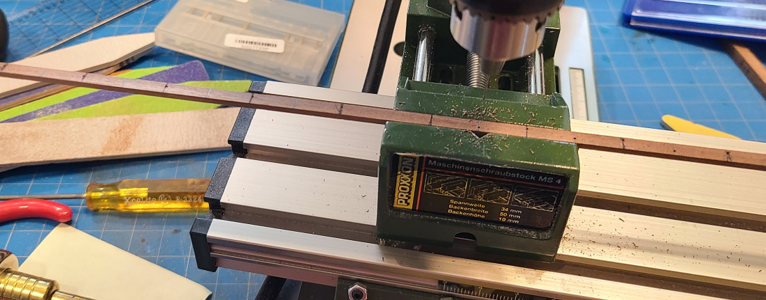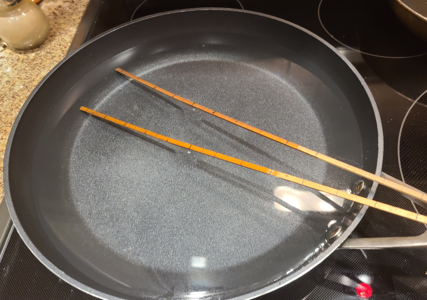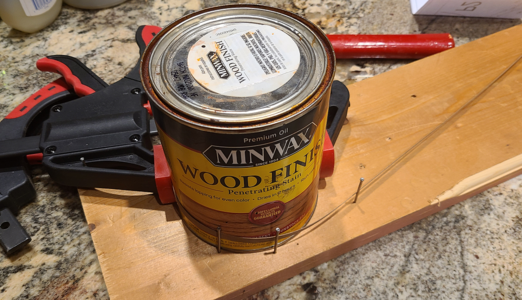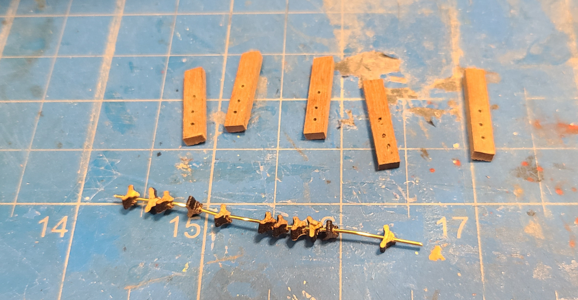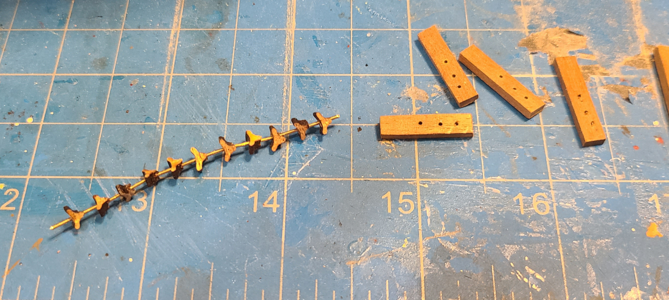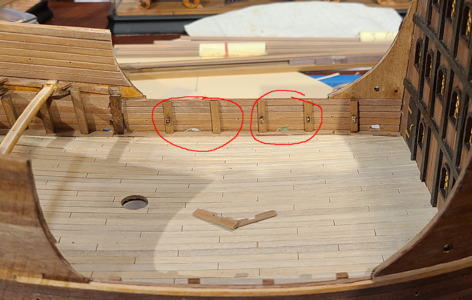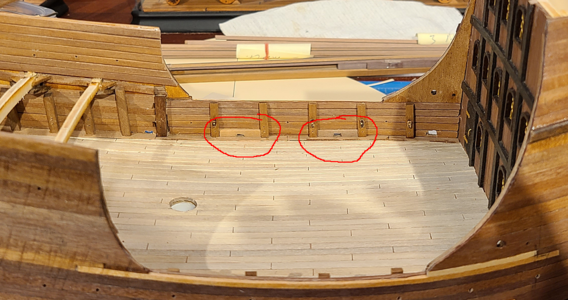Working next on the extension under the bowsprit (bowsprit deck? stem? I'm not sure). Looking at the figurehead provided (as well as the drawings of the carved version in yellow), I felt that part 43 (in red) was not large enough to provide a backing for it:
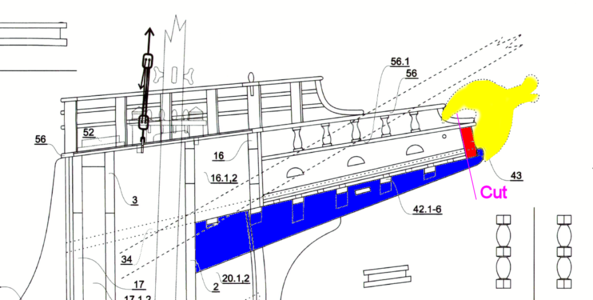
Also, the curved end of the blue extension (again, I don't the name of it) interferes with the figurehead (Olha sanded hers off as well). I decided to cut the blue part at the purple line, and add another piece to part 43 to make it higher:
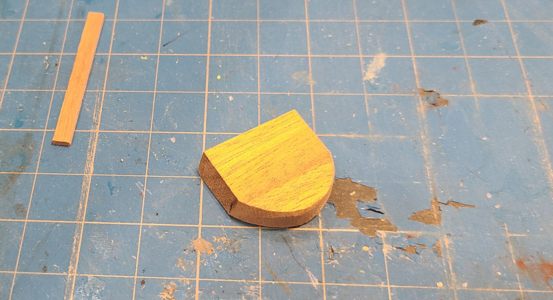
This seems to fit the figurehead much better:
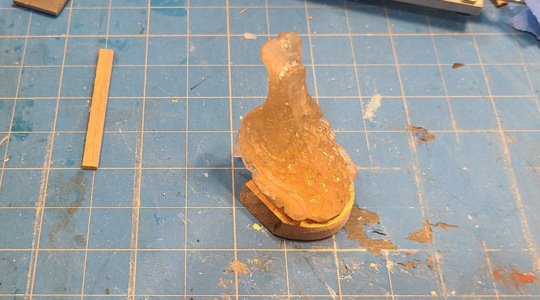
In fact, it wouldn't hurt for it to be a bit higher yet.
Since the mounting/gluing area for the modified part 43 is less, I decided to add a toothpick pin to help locate and strengthen it:
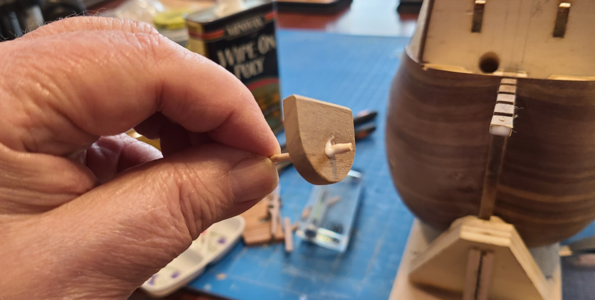
This was a whole lot easier to keep in place while the glue dried than any kind of clamping would have been:
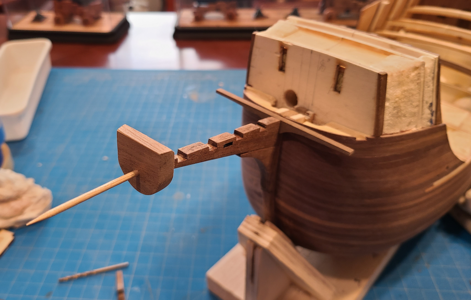
Maybe a simplified USS Unicorn figurehead?
The transition from rounded hull to straight bow extension results in a gap under the extension. I had some leftover planking pieces that I used here (partly finished in the picture):
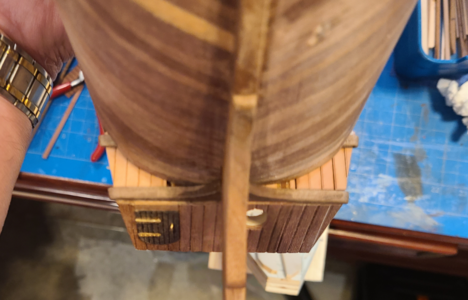
You can see where these go in from above:
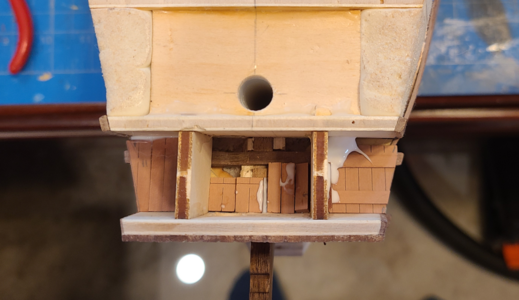
The remaining bowsprit floor supports have now been added:
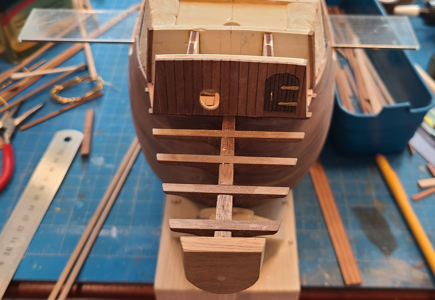
To make sure they're parallel to the rest of the model, I use a Level app on my smartphone. I placed a straightedge across the hull, placed the phone on it, and Zeroed the level reading, then placed it over the supports and adjusted it to zero, so they are parallel. I've used this method for a number of things, like setting angles on my sander and such, and it works very well.
Even though I've only added on plank to this assembly so far, I decided to deviate and work on the detail of the deck area and gratings, figuring they would be more difficult to to work on after the side planking was done. Also, I was avoiding making a couple dozen straight and perfectly tapered planks as long as possible.
I made up gratings (more about the material used later) to fit openings which were mounted around the floor area. Since gratings should never end on an "opening", I made them a bit narrower (left picture) to allow for another strip (shown in right picture):
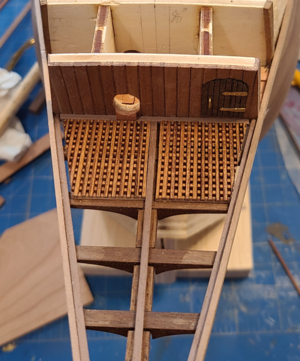
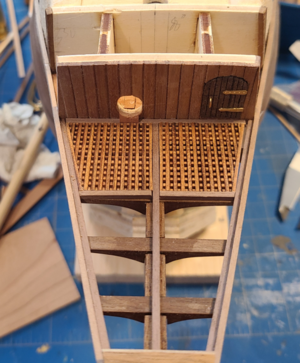
The added strip is of the same material, but is just glued to the side, because of course the notches don't line up when mounted at an angle:
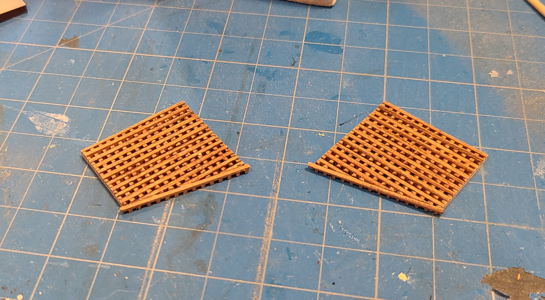
The four mounted gratings end up looking like this:
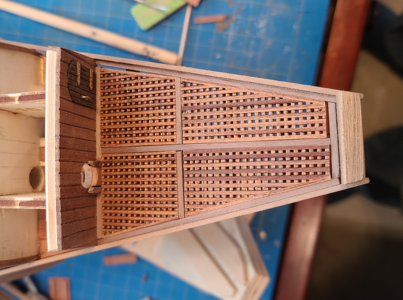
Those with sharp eyes may notice that the lower hinge of the door, which I lost months ago, has magically appeared in my desk drawer, and has been mounted to replace the hand-made substitute shown above. I didn't like the variation in wood color on the above, so sanded the tops and recoated with varnish, cutting the slots for the stropping at the same time:
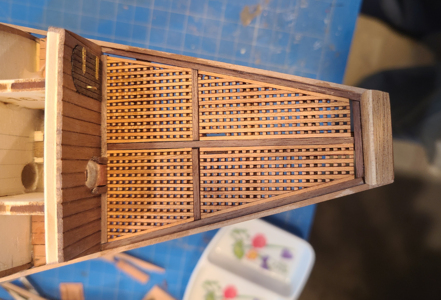
Much better, I think.
Concerning the grating, I'll do a mini-review of the grating I used here:
Model Shipways Cherry Wood Grating Strips 12 x 3/64 x 3/64"Laser Cut 8 pack
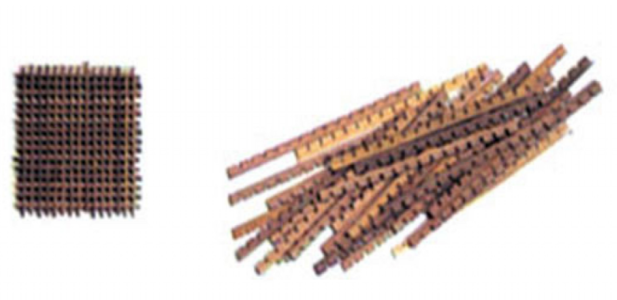
(Poor screenshot from their web site, corrected for distortion)
They look like this, delivered in a tube of 8 pieces, each 12" long:
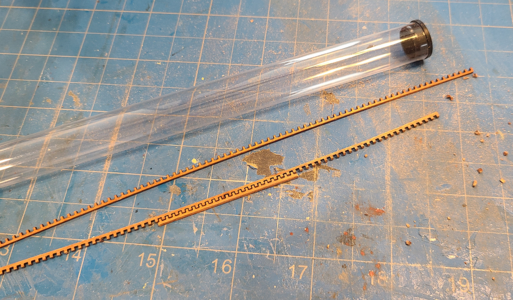
They are laser cut of cherry wood. The wood is fine, but laser cutting causes 2 problems: Lots of char to remove, and a pretty loose fit. I think most other (non laser cut) gratings are machined, which makes for a tighter fit. Anyhow, my opinion on these:
Pros:


Also, the curved end of the blue extension (again, I don't the name of it) interferes with the figurehead (Olha sanded hers off as well). I decided to cut the blue part at the purple line, and add another piece to part 43 to make it higher:

This seems to fit the figurehead much better:

In fact, it wouldn't hurt for it to be a bit higher yet.
Since the mounting/gluing area for the modified part 43 is less, I decided to add a toothpick pin to help locate and strengthen it:

This was a whole lot easier to keep in place while the glue dried than any kind of clamping would have been:

Maybe a simplified USS Unicorn figurehead?
The transition from rounded hull to straight bow extension results in a gap under the extension. I had some leftover planking pieces that I used here (partly finished in the picture):

You can see where these go in from above:

The remaining bowsprit floor supports have now been added:

To make sure they're parallel to the rest of the model, I use a Level app on my smartphone. I placed a straightedge across the hull, placed the phone on it, and Zeroed the level reading, then placed it over the supports and adjusted it to zero, so they are parallel. I've used this method for a number of things, like setting angles on my sander and such, and it works very well.
Even though I've only added on plank to this assembly so far, I decided to deviate and work on the detail of the deck area and gratings, figuring they would be more difficult to to work on after the side planking was done. Also, I was avoiding making a couple dozen straight and perfectly tapered planks as long as possible.
I made up gratings (more about the material used later) to fit openings which were mounted around the floor area. Since gratings should never end on an "opening", I made them a bit narrower (left picture) to allow for another strip (shown in right picture):


The added strip is of the same material, but is just glued to the side, because of course the notches don't line up when mounted at an angle:

The four mounted gratings end up looking like this:

Those with sharp eyes may notice that the lower hinge of the door, which I lost months ago, has magically appeared in my desk drawer, and has been mounted to replace the hand-made substitute shown above. I didn't like the variation in wood color on the above, so sanded the tops and recoated with varnish, cutting the slots for the stropping at the same time:

Much better, I think.
Concerning the grating, I'll do a mini-review of the grating I used here:
Model Shipways Cherry Wood Grating Strips 12 x 3/64 x 3/64"Laser Cut 8 pack

(Poor screenshot from their web site, corrected for distortion)
They look like this, delivered in a tube of 8 pieces, each 12" long:

They are laser cut of cherry wood. The wood is fine, but laser cutting causes 2 problems: Lots of char to remove, and a pretty loose fit. I think most other (non laser cut) gratings are machined, which makes for a tighter fit. Anyhow, my opinion on these:
Pros:
- Cherry wood is a nice alternative to very light woods usually used.
- 12" length makes for larger gratings without piecing and less waste.
- Pretty economical (I think - hard to know how much is included in other gratings), at least you can figure how much to order.
- Char must be removed by sanding both sides, which can easily break them.
- Even after sanding each strip individually, remaining char can vary, changing appearance. I recommend sanding after assembly.
- While the laser kerf is small, it's still there, making these fit together much more loosely than other gratings. Therefore, they're constantly falling out of the assembly as you're working on it, or even turning at an angle. Much more troublesome than machined gratings.


